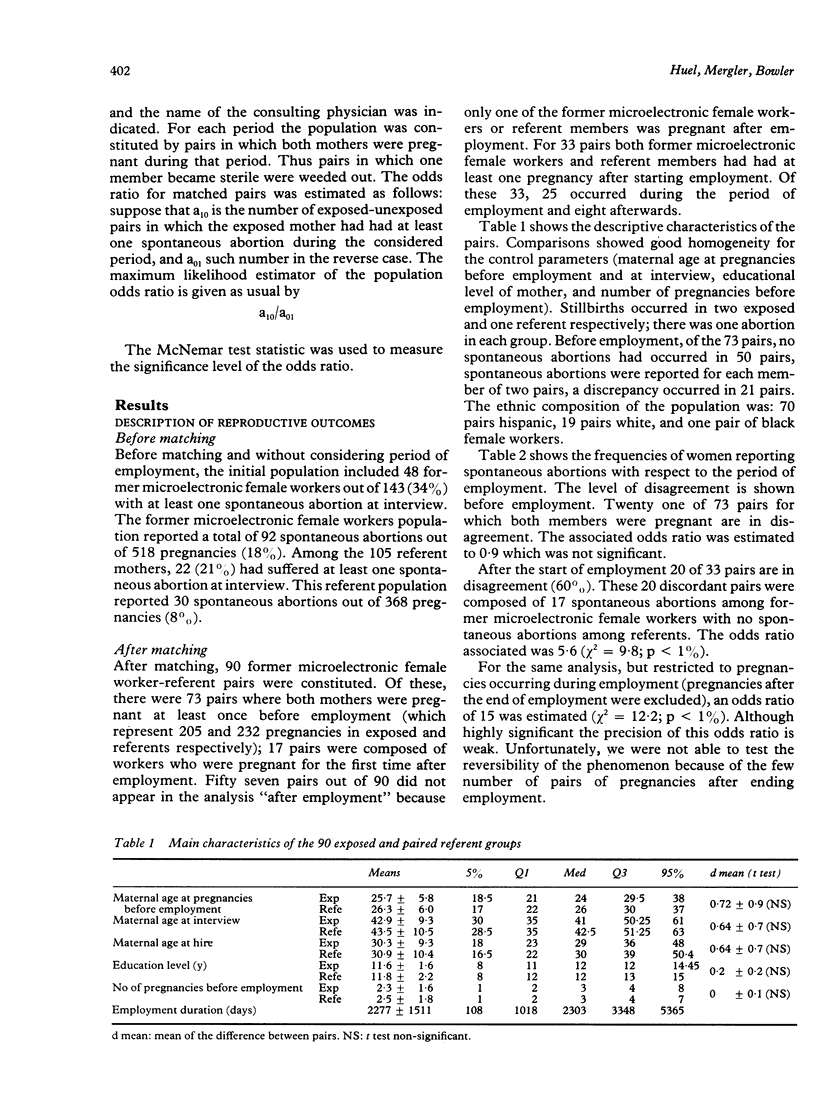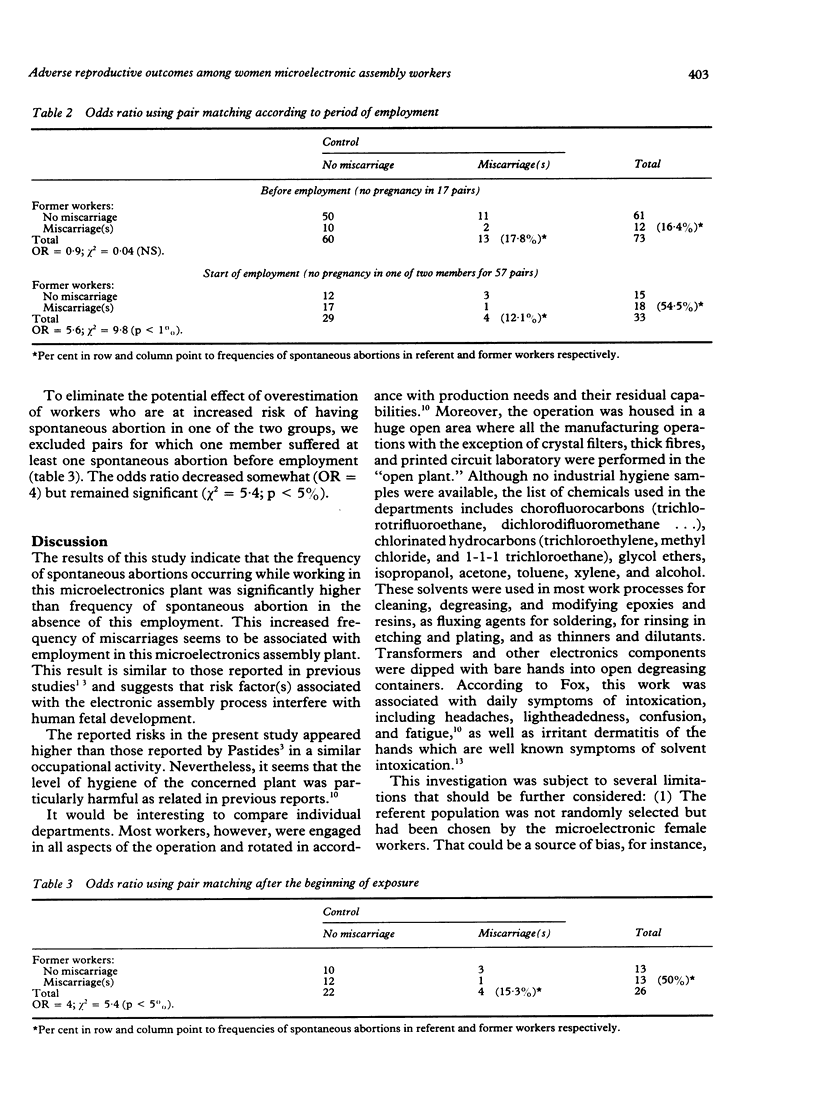Abstract
Microelectronics assembly entails complex processes where several potentially fetotoxic chemical compounds are used extensively. This study was undertaken to assess the potential adverse reproductive outcomes among former women workers in a microelectronics assembly plant in New Mexico with respect to a comparable population from the same geographical region and to examine the relation between these outcomes and employment history in this plant. After matching a pool of 143 former microelectronic female workers and 105 referents, 90 former microelectronic female worker-referent pairs were constituted (representing 302 and 324 pregnancies in former workers and referents respectively). The odds ratio (for pair matching design) of spontaneous abortion among women workers, before beginning to assemble microelectronic components, was 0.9 (chi 2 = 0.04; NS). After the beginning of employment this odds ratio became 5.6 (chi 2 = 9.8; p less than 1%). This estimated odds ratio decreased to 4.0, taking into account the increased risk for spontaneous abortion in previous pregnancies before employment (chi 2 = 5.4; p less than 5%). It was not possible to determine if this effect was reversible owing to the small number of pairs available after employment. The findings of this study corroborate the results of former studies that suggest a potential association between electronic manufacturing activity and risk of spontaneous abortion. Although the organic solvents were suspected of being the potential risk factor, this study was inconclusive from this point of view. Nevertheless, these investigations may provide some insight into reproductive outcomes among female workers exposed to solvents.
Full text
PDF




Selected References
These references are in PubMed. This may not be the complete list of references from this article.
- Cone J. E. Health hazards of solvents. Occup Med. 1986 Jan-Mar;1(1):69–87. [PubMed] [Google Scholar]
- Hemminki K., Axelson O., Niemi M. L., Ahlborg G. Assessment of methods and results of reproductive occupational epidemiology: spontaneous abortions and malformations in the offspring of working women. Am J Ind Med. 1983;4(1-2):293–307. [PubMed] [Google Scholar]
- Hemminki K., Franssila E., Vainio H. Spontaneous abortions among female chemical workers in Finland. Int Arch Occup Environ Health. 1980 Feb;45(2):123–126. doi: 10.1007/BF01274131. [DOI] [PubMed] [Google Scholar]
- Hemminki K., Niemi M. L., Koskinen K., Vainio H. Spontaneous abortions among women employed in the metal industry in Finland. Int Arch Occup Environ Health. 1980;47(1):53–60. doi: 10.1007/BF00378328. [DOI] [PubMed] [Google Scholar]
- Pastides H., Calabrese E. J., Hosmer D. W., Jr, Harris D. R., Jr Spontaneous abortion and general illness symptoms among semiconductor manufacturers. J Occup Med. 1988 Jul;30(7):543–551. [PubMed] [Google Scholar]
- WARBURTON D., FRASER F. C. SPONTANEOUS ABORTION RISKS IN MAN: DATA FROM REPRODUCTIVE HISTORIES COLLECTED IN A MEDICAL GENETICS UNIT. Am J Hum Genet. 1964 Mar;16:1–25. [PMC free article] [PubMed] [Google Scholar]


